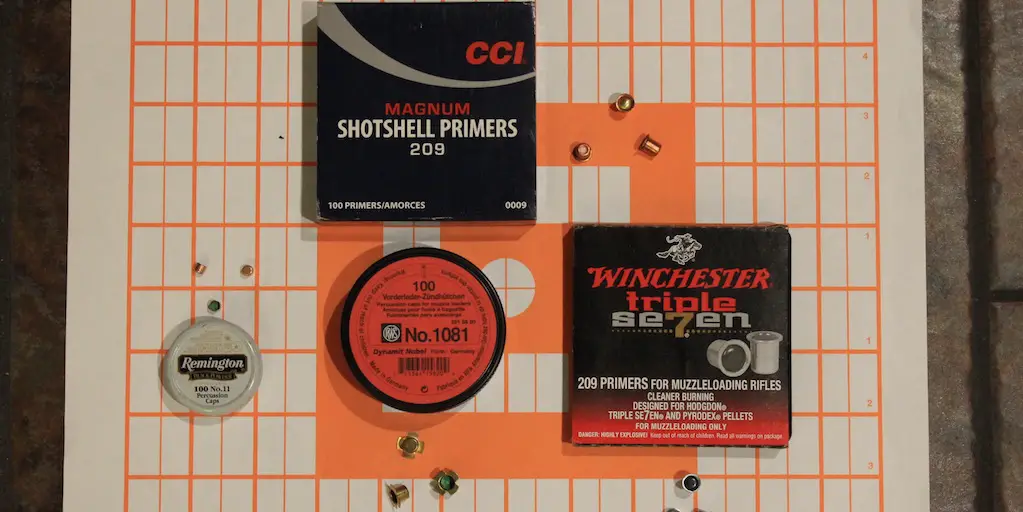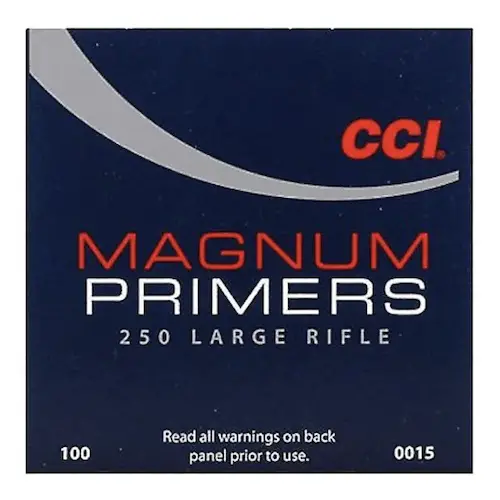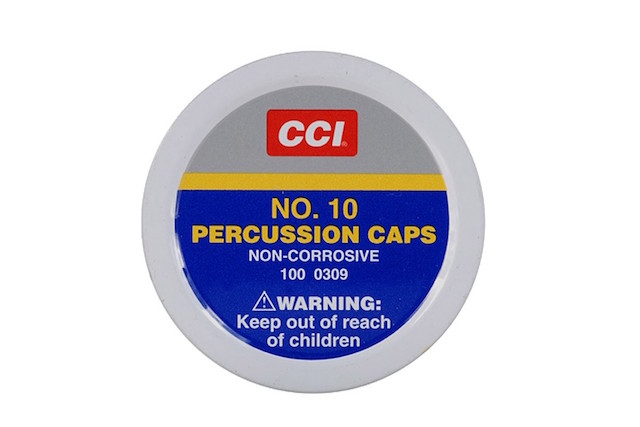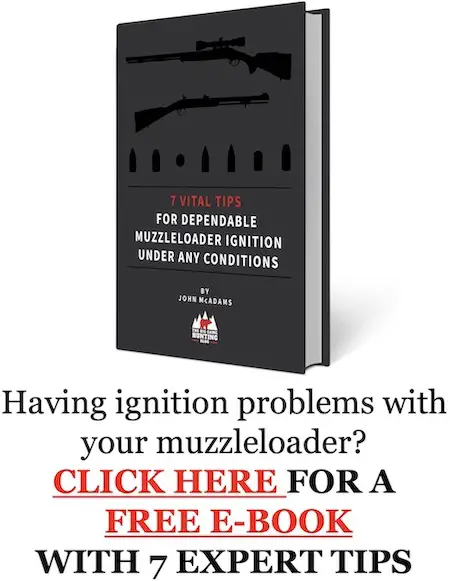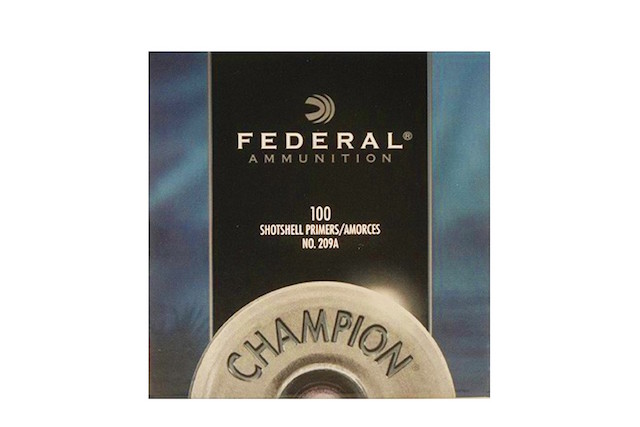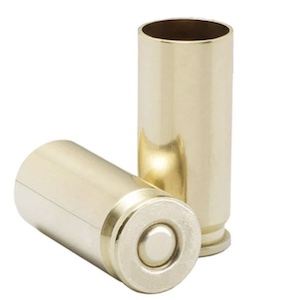Which muzzleloader primer should you use this hunting season?
I think you’ll agree with me when I say that choosing the best muzzleloader primer can be a pretty challenging task, especially if you’re new to hunting with a muzzleloader.
This is because there are so many different types and brands of muzzleloader primers on the market. At the same time, there is also a lot of misleading, out of date, or just plain wrong information out there regarding which primers are best suited to particular tasks.
Believe me, I feel your pain.
Over the years, I’ve experimented with a number of different primers in my muzzleloaders. Through a lot of trial and error, I learned a lot about the differences between the various different brands of #10 & #11 percussion caps, musket caps, and 209 primers. It took a lot of hard work, research, many hours at the range, and some frustrating hunting trips, but now I know exactly what primer to use with each of my muzzleloaders as well as with all of the various propellants and powders.
Now that I’ve “cracked the code” and figured out which primers are best for each different situation, I very rarely have misfires or hangfires and my accuracy has dramatically improved.
In this post, I’m going to share with you what I’ve learned about how to choose the best muzzleloader primer for your specific ignition system (flintlock muskets aside for obvious reasons).
Before we get started, here’s a disclaimer: the links below to Muzzle-Loaders.com and MidwayUSA are affiliate links. This means I will earn a small commission if you make a purchase.
This commission comes at no extra cost to you. This helps support the blog and allows me to continue to create free content that’s useful to hunters like yourself. Thanks for your support.
Update April 2022: While there was never a shortage of muzzleloader supplies anywhere near as severe as the case with centerfire ammunition, the incredible and sustained demand for centerfire ammunition has spilled over into the muzzleloader world. Many of the same companies that produce centerfire ammunition also produce muzzleloader primers and powder and have focused more of their energy on fulfilling orders for centerfire components.
For this reason, muzzleloader primers can be extremely difficult to find at times. Click the link below if you just want to quickly check what muzzleloader primers are in-stock and ready to ship so you can hit the range and get ready for hunting season.
Now that we’ve got that out of the way, let’s get started.
CCI Magnum Large Rifle Primers
Modern “magnum” muzzleloaders like the CVA Paramount use large rifle primers to ignite their gigantic powder charges. Well, these CCI magnum large rifle primers provide the best mix of a hot flame and consistent performance that’s conducive for a high degree of accuracy in those muzzleloaders. Note that the Remington 700 Ultimate Muzzleloader uses slightly different primers (details on them are farther down int his article.
BUY CCI MAGNUM LARGE RIFLE PRIMERS HERE
Also Available At: Muzzle-Loaders.com
#10 and #11 percussion caps are very similar in appearance, with the #11 caps generally being slightly larger in diameter. I say generally because the exact size varies from brand to brand and it’s possible to find #10 caps from one brand that are bigger than #11 caps from a different brand.
CCI, Remington, and RWS all currently produce #10 percussion caps (the RWS #10 caps are sold commercially as the RWS 1055). The RWS #10 caps tend to be the smallest, the CCI caps are a little bigger in diameter, and the Remington #10 caps are usually the largest.
For the most part, #10 caps produce the smallest flame out of all the muzzleloader primers in current use, so they are best used in conjunction with a fine granulation black powder that’s easy to ignite. For that reason, #10 caps are most commonly used on percussion cap revolvers, though they can also be used on certain side-lock or even in-line muzzleloading rifles with loose powder.
Like I said earlier, the exact cap size varies from brand to brand, so if you have a black powder gun that uses #10 caps, the best muzzleloader primer for you really depends on the size of the nipple on your particular gun. The only way for sure is to buy a few caps from different manufacturers and see which one fits your gun the best.
While the cap should fit snugly, it’s better to have a cap that’s a little too big than one a little too small. If the cap is too small for the nipple, it will be really though to seat it properly and there’s a good chance that it might not go off when you try to shoot.
Also Available At: Muzzle-Loaders.com
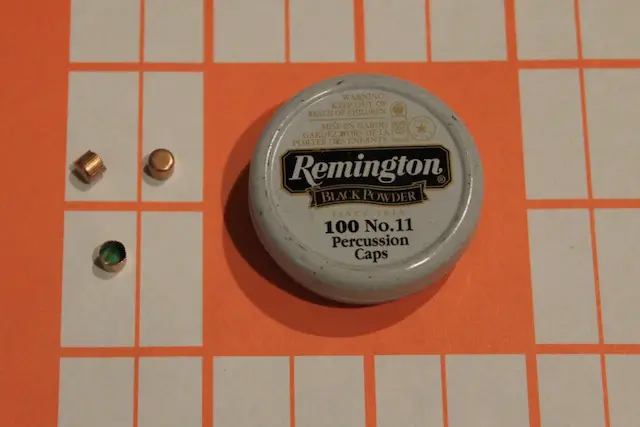
As stated previously, #11 caps are very similar to #10 caps, but are typically a little bigger and produce a hotter flame. They’re also a much more common muzzleloader primer for side-lock and in-line muzzleloaders.
CCI, Remington, and RWS all make #11 caps as well (the RWS #11 caps are sold commercially as the RWS 1075). CCI, RWS (the 1075 Plus), and Winchester also make a #11 magnum cap that’s almost identical in size to a regular cap, but produce a hotter flame.
#11 caps work best with regular black powder, but some hunters have also had good results using them with a black powder substitute like Pyrodex or 777. I personally had mixed results getting #11 caps to ignite loose Triple Se7en powder in my Thompson Center New Englander muzzleloader and chose to go with regular black powder instead.
When using a cap that fits the nipple of a muzzleloader snugly, #10 and #11 caps also have the advantage of forming a pretty good seal that can help keep your powder as well as the inside of the cap itself dry during inclement weather.
Not surprisingly, #11 and #11 magnum caps are popular with muzzleloader hunters, particularly those with Knight in line rifles and hunters those that live in wet climates.
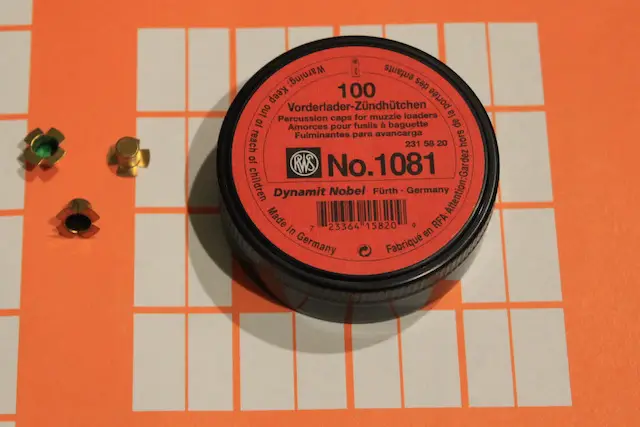
As you can see in the photos, musket caps often have distinctive “wings” and are physically much larger than #10 or #11 caps.
There is a lot of confusing information out there regarding musket caps and a lot of people claim that musket caps produce the hottest flame out of any percussion cap. Though musket caps do indeed burn hotter than #10 or regular #11 caps, they produce a flame almost identical in temperature to a #11 magnum cap.
All that being said, musket caps do produce a larger volume of gas over a slightly longer period of time. That might provide a small advantage if your powder charge got a little wet or when using a sidelock, where the flame needs to travel a longer distance to reach the powder.
For all intents and purposes though, a musket cap will work just about as good as a #11 magnum cap.
Unfortunately, one of the disadvantages of musket caps is that they have a few seams along the sides that prevents them from sealing off the nipple from the elements like a snugly fitting #10 or #11 cap.
CCI, RWS, and Scheutzen all produce musket caps (the 4 and 6 wing RWS musket caps are sold commercially as the RWS 1081 and RWS 1218 respectively).
Of these three brands, the RWS 1081 and Scheutzen caps are normally the most popular and both are excellent. These caps will work great for igniting black powder in a side-lock or inline muzzleloader. They can provide mixed results with black powder substitutes.
For what it’s worth, I’ve had great success using the RWS 1081 musket caps in my CVA Wolf and Optima Northwest muzzleloaders with black powder and black powder substitutes. They also worked great with black powder in my side-lock Thompson Center New Englander, but frequently produced hangfires with black powder substitutes.
Whatever you do though, make sure you don’t buy any “reenactment” musket caps. These aren’t designed for hunting and you’re almost guaranteed to have ignition problems with them.
BUY SCHUETZEN MUSKET CAPS HERE
Winchester 209 Muzzleloader Primers
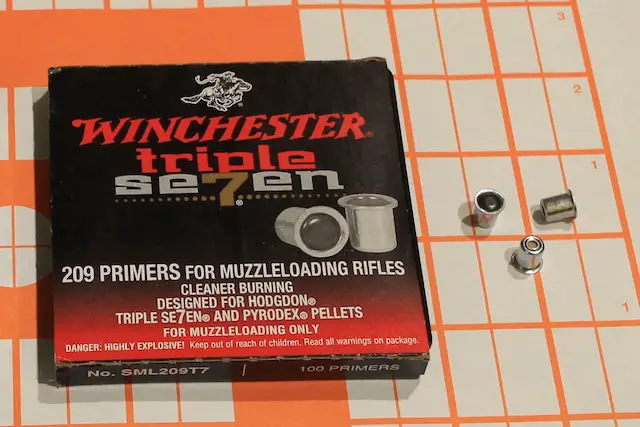
Though they have the same exterior dimensions as a typical 209 shotshell primer, Winchester 209 muzzleloader primers are specifically designed for use in a muzzleloader. They aren’t quite as powerful as a regular 209 primer, but these Winchester 209 primers are more than powerful enough to ignite Pyrodex, IMR White Hots, and Hodgdon’s Triple Seven in both loose and pelletized form. They’ll also work really well with black powder.
The big advantage to using Winchester muzzleloader primers is that they aren’t as dirty as typical 209 primers. If you’re having issues with the infamous “crud ring” in the breech of your muzzleloader when using Hodgdon’s 777, then consider switching over to using Winchester 209 muzzleloader primers.
On the other hand, depending on the exact breech plug you’re using, you might run into ignition issues with these 209 primers if you use them in conjunction with Blackhorn 209. In fact, the folks that manufacture Blackhorn 209 specifically recommend NOT using 209 muzzleloading primers like these for most reliable ignition.
There are two solutions to this problem: either use a hotter 209 primer (more on this in a second) or switch over to a Blackhorn compatible style breech plug.
As you can see in the photo below, the Blackhorn breech plug (available here or here) moves the powder a little closer to the muzzleloader primer, which makes the powder a little easier to ignite.
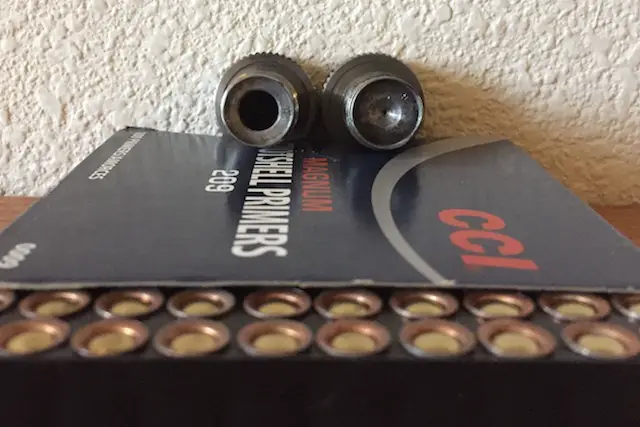
I’ve used these Winchester 209 muzzleloader primers extensively with my in-line muzzleloading guns and they’ve been pretty reliable with the major black powder substitutes (as long as you use a Blackhorn breech plug with Blackhorn 209). I’ve also gotten slightly better accuracy and a little bit less “crud” buildup with the Winchester 209 primers than I have with other 209 primers.
BUY WINCHESTER 209 MUZZLELOADING PRIMERS HERE
If you decide to make the switch over to a hotter 209 primer to get more reliable ignition with Blackhorn 209, then you should consider using a Federal 209A primer. It’s a standard shotgun primer that burns quite a bit hotter than a 209 muzzleloader primer and it’s one of two primers specifically recommended for use with Blackhorn 209 by the manufacturer.
Though Federal 209A primers are recommended for use with Blackhorn 209, it’s not limited for use with just that powder. Indeed, those primers will also reliably ignite just about every other black powder substitute currently available on the market.
They aren’t quite as clean as the Winchester 209 muzzleloader primers, but on the other hand, the Federal 209A primers are also quite a bit less expensive.
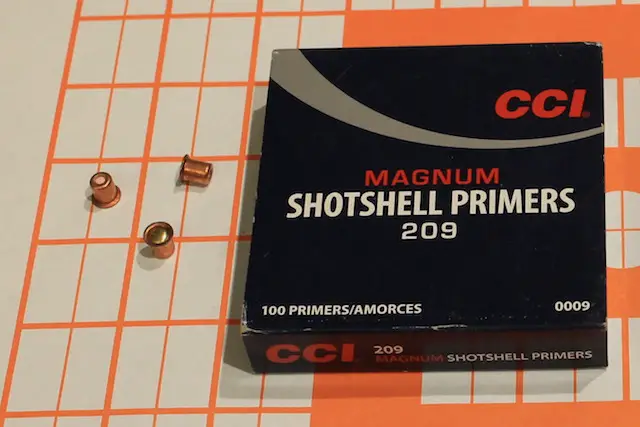
In addition to the Federal 209A primer, the CCI 209 Magnum (CCI 209M) is another muzzleloader primer highly recommended for use with Blackhorn 209 by the manufacturer. While I don’t have anything against the Federal 209A primers at all, the CCI 209M primers are what I personally use with Blackhorn 209 in my muzzleloaders.
These are also great muzzleloader primers to use for reliable ignition with the other black powder substitutes. Similar to the Federal 209A primers, the CCI209M primers are more powerful, less expensive, but slightly dirtier than the Winchester 209 primers. The Winchester 209 primers were a little more accurate, but the CCI209M primers still shot very well for me.
Remington 700 Ultimate Muzzleloader Casings
These primer casings are specifically designed for use with the Remington 700 Ultimate Muzzleloader. Basically, this is a brass casing that comes pre-primed with a magnum rifle primer (yes, they come from the factory with the primer). Additionally, the brass casing is reusable and can be re-primed after firing using a set of 308 dies with new magnum rifle primers.
BUY REMINGTON 700 ULTIMATE MUZZLELOADER PRIMERS HERE
While this post covers choosing the right muzzleloader primer, that’s only part of the equation when hunting with a muzzleloader. For more detailed information on choosing the right propellant and bullets, check out these other articles:
Blackhorn 209 vs 777 vs Goex Black Powder: Which One Should You Use In Your Muzzleloader?
13 Of The Best Muzzleloader Bullets For Hunters
9 Best Muzzleloader Scopes For Hunters
These Are The Best 9 Best Muzzleloader Sights For Hunters
9 Of The Best Muzzleloaders For Hunters
5 Best Traditional Muzzleloaders For Hunters
Essential Muzzleloader Supplies Every Hunter Needs
101 Best Gifts For Hunters To Put On Your Wish List
11 Best Hunting Ear Protection Options For Hunters
Enjoy this article on the best muzzleloader primers? Please share it with your friends on Facebook and Twitter.
Make sure you subscribe to The Big Game Hunting Podcast and follow The Big Game Hunting Blog on Facebook, Instagram, Twitter, and YouTube.
NEXT: HOW TO HUNT WITH A MUZZLELOADER
John McAdams is a proficient blogger, experienced shooter, and long time hunter who has pursued big game in 8 different countries on 3 separate continents. John graduated from the United States Military Academy at West Point and is a veteran of combat tours with the US Army in Iraq & Afghanistan. In addition to founding and writing for The Big Game Hunting Blog, John has written for outdoor publications like Bear Hunting Magazine, The Texas State Rifle Association newsletter, Texas Wildlife Magazine, & Wide Open Spaces. Learn more about John here, read some of John’s most popular articles, and be sure to subscribe to his show: the Big Game Hunting Podcast.

